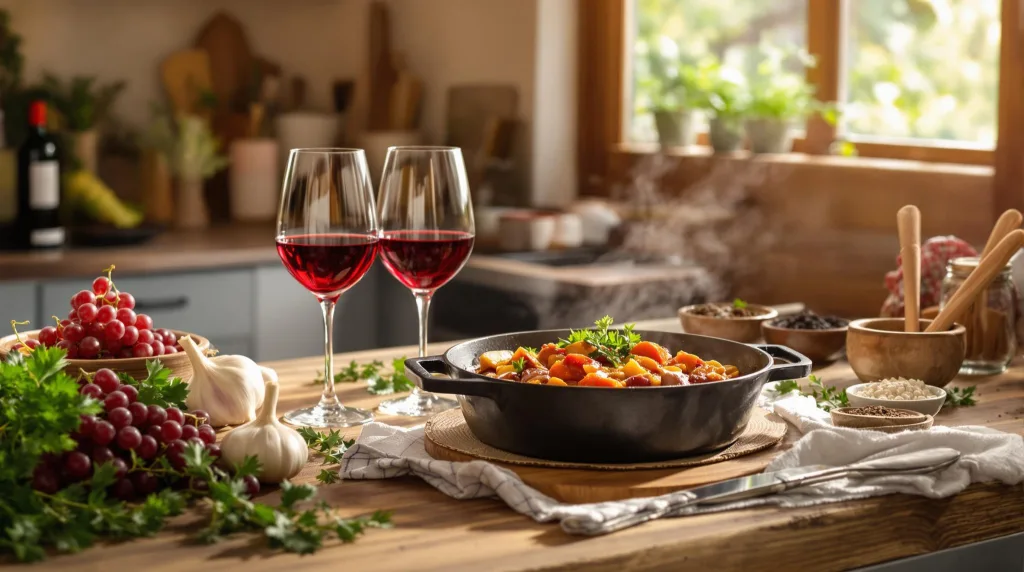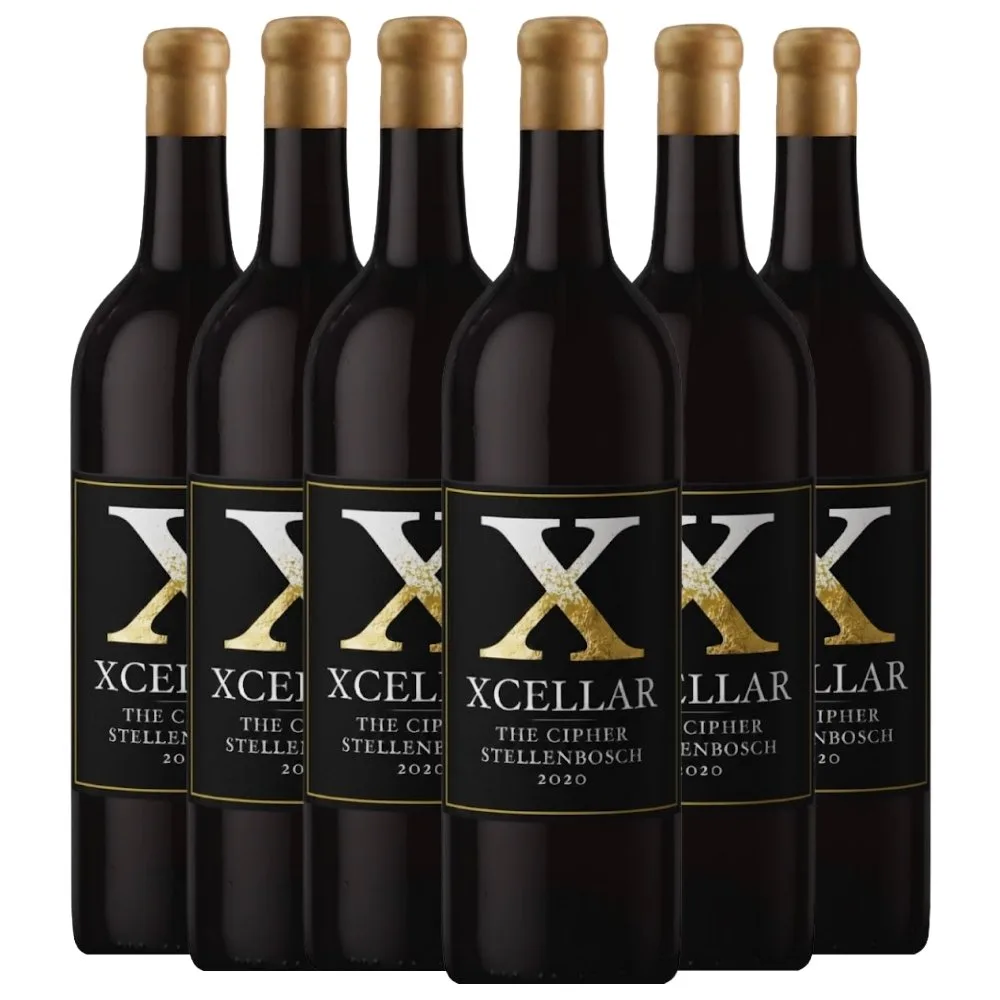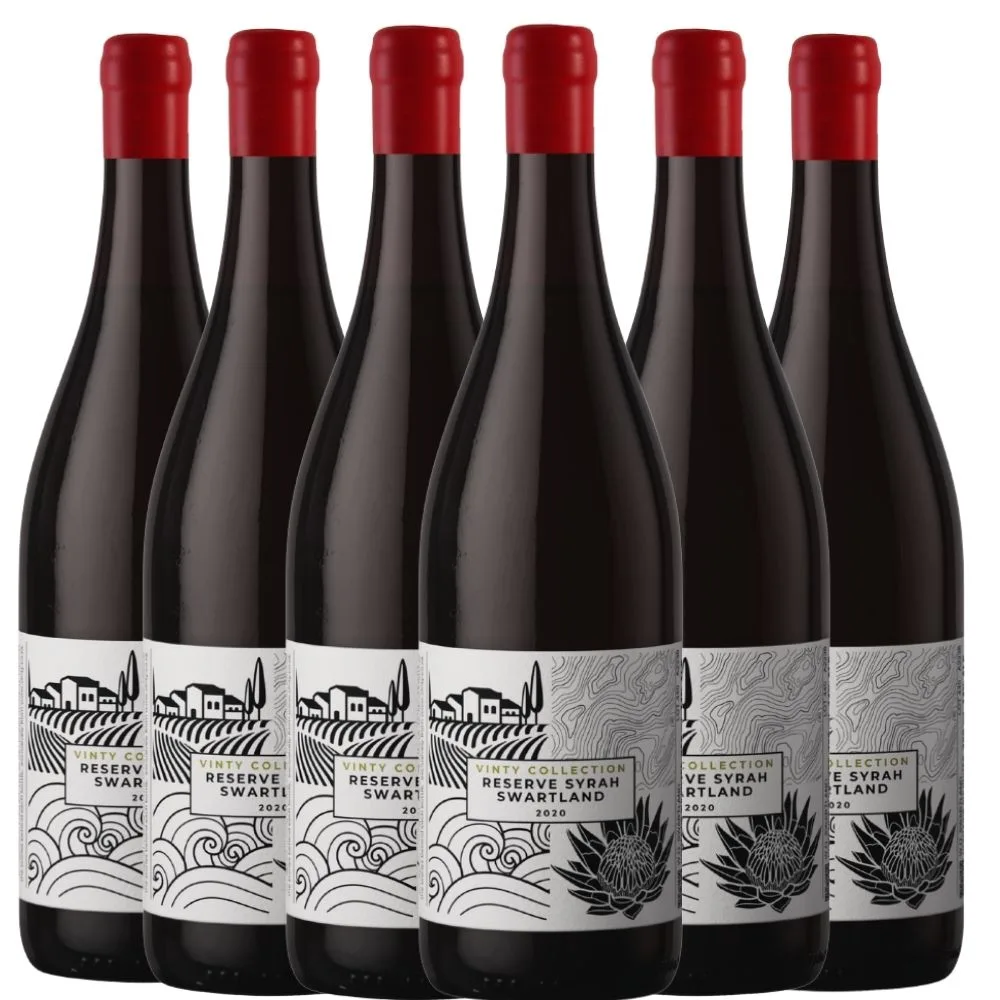Cooking with red wine has long been a secret trick of home chefs and restaurant pros alike. South Africans are making their mark with small-batch bottles that can totally transform a simple meal. But get this. Studies have shown that marinating chicken in red wine can slash harmful chemical formation by up to 88%. Most people just think about the taste, but it turns out that the right local red could make your next dinner healthier as well as more delicious. You might never look at your spice rack or that bottle of Pinotage the same way again.
Table of Contents
Quick Summary
| Takeaway | Explanation |
| Choose fruity, medium-bodied wines | Select red wines with robust fruit characteristics and moderate tannins for cooking. Avoid oak-aged varieties to prevent bitterness. |
| Pair wines with matching dish intensity | Match the richness of small-batch South African reds to the flavours of your meal for harmonious dining experiences. |
| Use red wine to enhance flavour deeply. | Incorporate red wine in marinades and reductions as it tenderises meat and adds complexity to dishes without overpowering them. |
| Seek budget-friendly wines with bold profiles. | Look for South African wines that deliver strong fruit flavours without high prices, ensuring quality cooking experiences. |
| Experiment and trust your palate | Wine pairing is an art; feel free to explore bold combinations as South African reds offer diverse options for culinary creativity. |
Choosing the Best Red Wine for Cooking
When it comes to cooking with red wine, not all wines are created equal. The right bottle can transform a simple dish into a culinary masterpiece, while the wrong choice can leave your meal tasting bitter or flat. Understanding how to select the perfect red wine for cooking is an art form that balances flavour, complexity, and cooking technique.
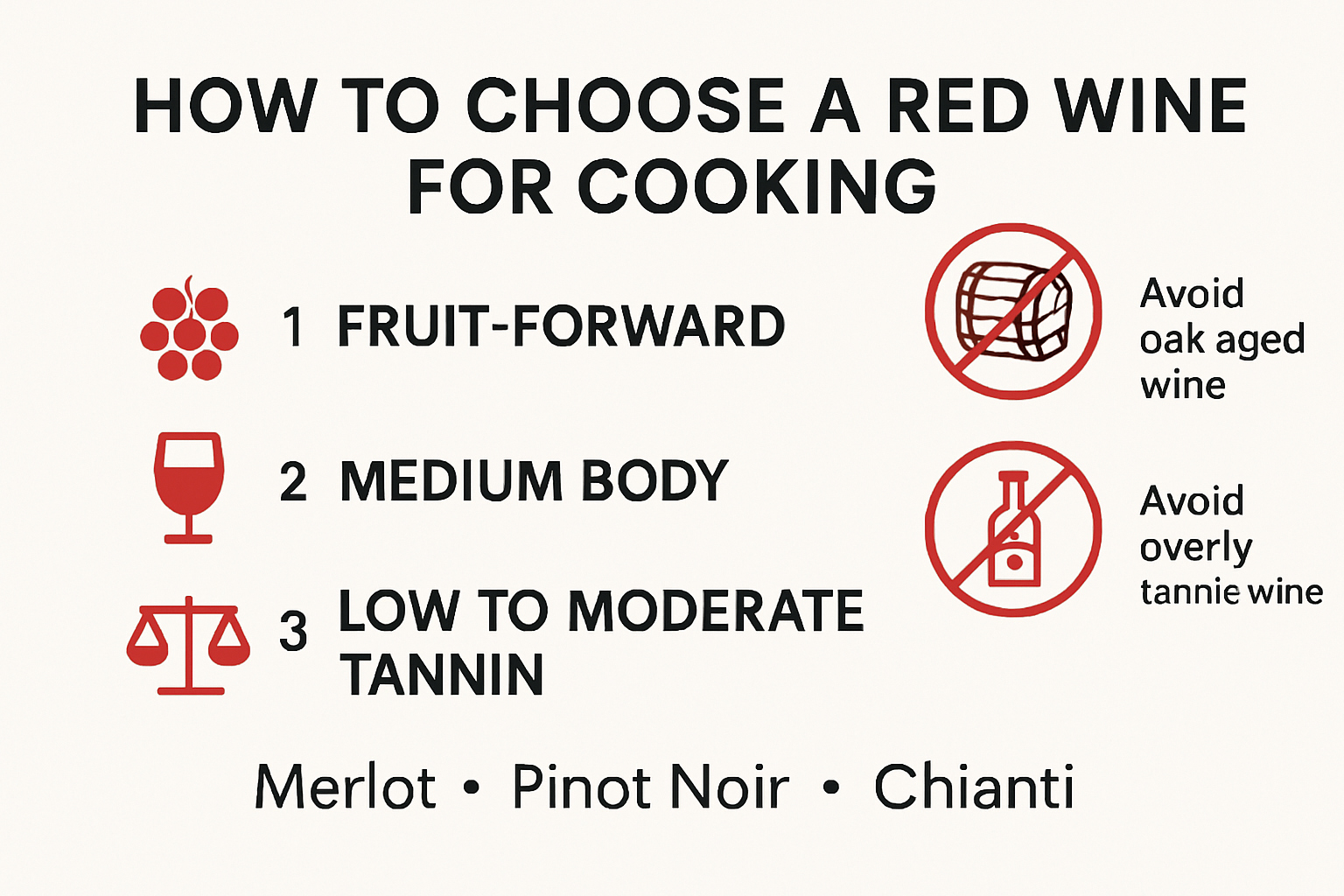
Understanding Wine Selection for Culinary Purposes
Cooking with wine isn’t about using your most expensive bottle. Explore our local wine guide to understand the nuanced world of South African reds that work brilliantly in the kitchen. According to America’s Test Kitchen, the ideal cooking wine should be fruity and medium-bodied. Avoid wines that have been aged in oak barrels, as these can introduce harsh, bitter notes when reduced during cooking.
Key considerations for selecting a cooking wine include:
-
Fruit Forward: Look for wines with robust fruit characteristics
-
Moderate Tannins: Wines with softer tannin structures work best
-
Affordable Quality: Save your premium bottles for drinking
Techniques for Cooking with Red Wine
The Wine Oenology Grape Chemistry Lab at Virginia Tech recommends adding wine approximately ten minutes before serving to maintain its original flavour components. This approach enables the wine to blend seamlessly with other ingredients while retaining its distinctive character. High-heat cooking can destroy delicate flavour compounds, so gentle reduction is key.
If you find yourself without wine, MasterClass suggests alternatives like stock, vinegar, or fruit juices that can mimic similar flavour profiles. However, nothing quite replaces the depth and complexity that a good red wine brings to a dish.
Remember, the goal is to enhance your cooking, not overpower it. A splash of red wine can elevate sauces, stews, and braises, adding layers of flavour that transform ordinary meals into extraordinary experiences. Whether you’re braising short ribs, deglazing a pan, or creating a rich reduction, the right South African red wine is your secret ingredient.
To help you easily understand the key factors in choosing a red wine for cooking, here’s a summary table of the most critical selection criteria and their recommended characteristics.
| Criteria | Recommended Characteristic | Why It Matters |
| Fruit Forward | Robust fruit characteristics | Adds depth and sweetness to dishes |
| Tannin Level | Moderate to low | Prevents bitterness when wine is reduced |
| Oak Aging | Avoid oak-aged wines | Oak can introduce harsh, bitter notes during cooking |
| Price | Affordable quality | Premium bottles are best reserved for drinking |
| Body | Medium-bodied | Versatile for most cooking methods |
South African Small-Batch Reds: Perfect Pairings
Navigating the world of small-batch South African red wines is like discovering a treasure map of flavours waiting to transform your culinary experiences. These unique wines aren’t just beverages; they’re storytellers of terroir, craftsmanship, and regional character.
Understanding Flavour Profiles and Pairings
Explore our comprehensive red wine guide to appreciate the nuanced world of South African reds. According to research analysing phenolic compositions, different cultivars, such as Pinotage, Shiraz, and Cabernet Sauvignon, offer distinct phenolic levels that significantly impact wine quality and food pairing potential.
Key pairing principles for small-batch reds include:
-
Match Intensity: Pair robust wines with equally powerful dishes
-
Regional Harmony: Consider wines and foods from similar geographical origins
-
Balance Flavour Profiles: Complement or contrast wine characteristics with meal components
The Science of Wine and Food Harmony
Interestingly, consumer perception research indicates that the country of origin has a significant influence on wine selection and pairing preferences. This suggests that South African small-batch reds carry a unique cultural and sensory signature that transcends typical wine recommendations.
A fascinating WineGraph study introduces an innovative graph-based model for food-wine pairing, utilising extensive datasets to suggest pairings based on sophisticated taste descriptors. This approach moves beyond traditional matching rules, offering more nuanced and personalised recommendations.
For instance, a peppery Syrah might beautifully complement a spice-rubbed lamb, while a fruit-forward Pinotage could elevate a rich, slow-cooked beef potjie. The key is understanding each wine’s unique character and how it interacts with different flavour profiles.
Remember, wine pairing is part science, part art. Trust your palate, experiment boldly, and don’t be afraid to break traditional rules. South African small-batch reds offer an exciting playground for culinary creativity, inviting you to explore flavours that tell stories of sun-drenched vineyards and passionate winemakers.
Expert Tips: Enhancing Flavour in Dishes
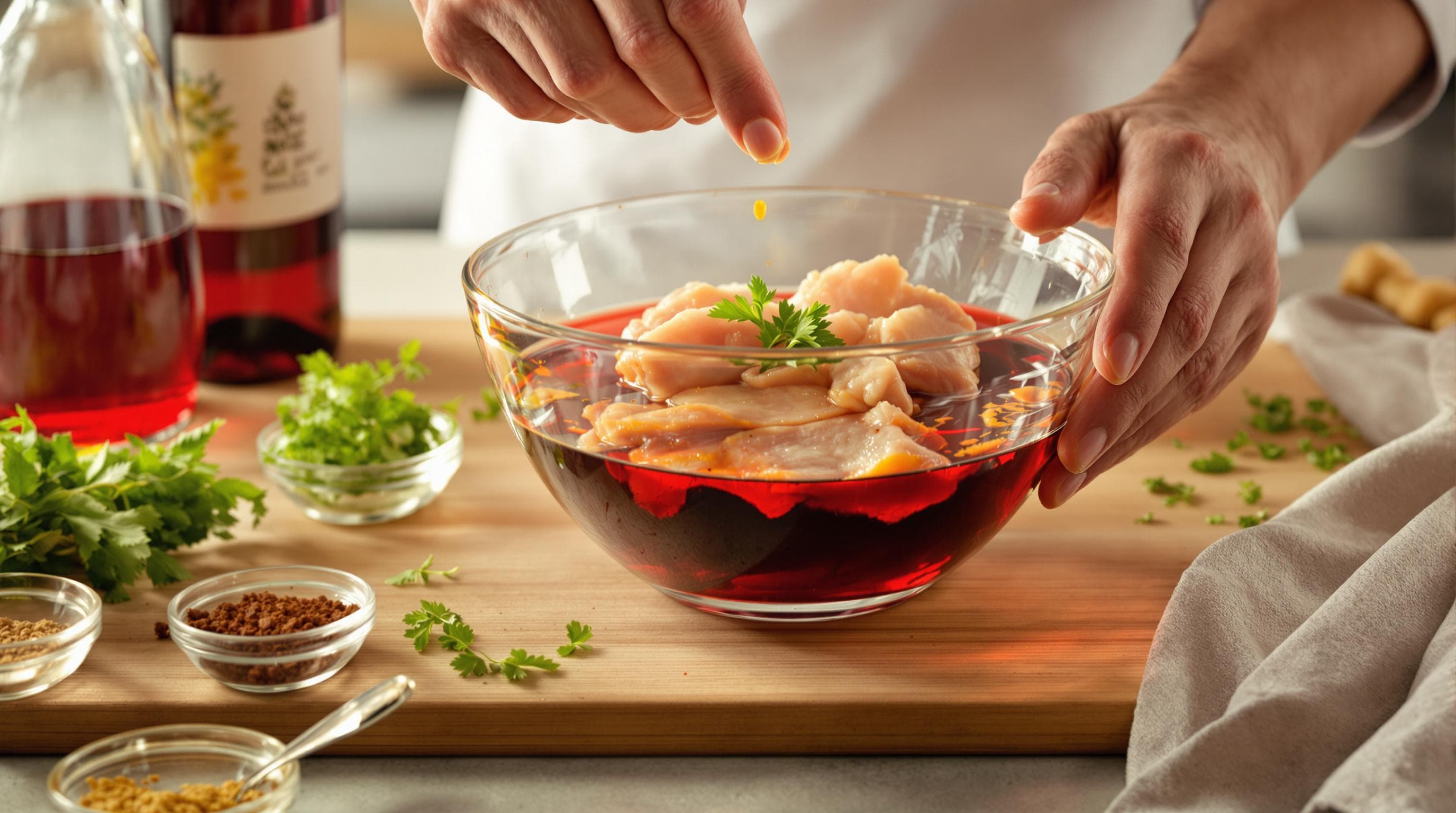
Cooking with red wine is an art form that transforms ordinary dishes into extraordinary culinary experiences. Understanding the science and technique behind wine-enhanced cooking can elevate your kitchen skills from good to exceptional.
The Science of Wine in Cooking
Scientific research reveals fascinating insights into how red wine impacts cooking. Discover the nuances of wine techniques and learn how wine can elevate your dishes. According to research published in the Journal of Agricultural and Food Chemistry, red wine marinades can do more than add flavour. A groundbreaking study demonstrated that marinating chicken in red wine can reduce the formation of potentially harmful heterocyclic amines (HAs) by up to 88%, making your cooking not just tastier, but potentially healthier.
Key techniques for maximising wine’s culinary potential include:
-
Marination Magic: Use red wine to tenderise and flavour meats
-
Reduction Techniques: Slowly concentrate wine flavours in sauces
-
Deglazing Brilliance: Extract maximum flavour from cooking pans
To help you visualise the main techniques for cooking with red wine, here’s a process table summarising the methods and their key benefits.
| Technique | How It’s Used | Key Benefit |
| Marination | Meat soaked in wine before cooking | Tenderises meat, enhances flavour, reduces HAs |
| Reduction | Wine simmered into sauces/stews | Concentrates flavours, adds complexity |
| Deglazing | Added to hot pan after browning | Lifts caramelised bits, enriches sauces |
Tannins, Proteins, and Flavour Complexity
The Culinary Institute of America offers critical insights into managing tannins during cooking. Tannins, those astringent compounds found in red wine, can become more concentrated during the cooking process. This can create bitter notes if not managed carefully. The solution? Choose wines with lower tannin levels, like Pinot Noir, or incorporate proteins into your dish, as they naturally bind with tannins and reduce their astringency.
Research in the journal Beverages provides additional fascinating details. Wine marinades don’t just add flavour; they transform meat at a molecular level. The acidic nature of red wine breaks down muscle fibres, while phenolic compounds react with proteins to create a protective crust that helps retain meat juices. This means your dishes become more tender, more flavorful, and more succulent.
When cooking with red wine, think of yourself as a culinary alchemist. Each splash is an opportunity to transform ingredients, to tell a story through flavour. South African small-batch reds offer a particularly exciting palette of possibilities. A peppery Syrah might add depth to a beef stew, while a fruit-forward Pinotage could bring unexpected complexity to a marinara sauce.
Remember, cooking with wine is about balance and intuition. Start with small amounts, taste frequently, and don’t be afraid to experiment. Your kitchen is a laboratory of flavour, and South African red wines are your most intriguing ingredients.
Budget-Friendly Wines That Impress in Recipes
Delicious cooking doesn’t have to drain your wallet. South African wines offer an incredible range of budget-friendly options that can transform your culinary creations without compromising on quality or flavor.
Discovering Affordable Culinary Companions
Explore our guide to celebration wines and uncover hidden gems that won’t break the bank. According to the Financial Times, South Africa is a treasure trove of value wines, particularly from regions like Stellenbosch and Swartland. Producers such as Mullineux and Sadie Family are renowned for creating exceptional wines that offer remarkable quality at accessible price points.
Key characteristics of budget-friendly cooking wines include:
-
Robust Flavour Profile: Wines with intense fruit notes
-
Versatility: Suitable for both drinking and cooking
-
Consistent Quality: Reliable taste across different vintages
Regional Gems and Sustainable Choices
The Independent highlights a remarkable Pinotage from Swartland that exemplifies exceptional value. Made by winemaker Leon Esterhuizen, this Fairtrade-certified wine offers intense flavours of plum, blackcurrant, and cherries, with a subtle touch of spice and smoky undertones. Such wines prove that affordability doesn’t mean compromising on complexity.
A comprehensive Financial Times wine review showcased an impressive selection of wines, demonstrating that budget-friendly options can be found across various styles and price ranges. When selecting a wine for cooking, consider these practical tips:
-
Choose wines you would also enjoy drinking
-
Look for wines with bright, forward fruit flavours
-
Avoid overly oak-aged or tannic wines that can become bitter when reduced
Remember, the best cooking wine doesn’t have to be expensive. It should complement your dish, adding depth and character without overwhelming the other ingredients. South African wines, with their incredible diversity and value, offer home cooks an exciting palette of flavours to experiment with.
Whether you’re preparing a rich beef stew, a delicate reduction sauce, or a hearty marinara, there’s a South African wine waiting to elevate your dish. Embrace the adventure of cooking with these budget-friendly bottles, and let your culinary creativity shine.
Frequently Asked Questions
What is the best red wine for cooking with South African flavours?
For cooking, select fruity, medium-bodied South African red wines with moderate tannins. Avoid oak-aged varieties to prevent bitterness in your dishes.
How can red wine enhance the flavour of my recipes?
Red wine can enhance flavours through techniques like marination, reduction, and deglazing. These methods allow the wine to tenderise meats and add complexity without overpowering other ingredients.
Are there budget-friendly South African wines suitable for cooking?
Yes, you can find many budget-friendly South African wines that offer robust flavour profiles. Look for wines from regions such as Stellenbosch and Swartland that deliver high quality at affordable prices.
Why should I consider using South African small-batch wines in my cooking?
South African small-batch wines often reflect the unique terroirs and craftsmanship of their producers. They provide diverse flavour options that can create exciting culinary experiences and enhance both the taste and health benefits of your meals.
Transform Your Everyday Cooking into Something Special
Looking for a truly unique way to bring South African flair and bold character to your cooking? If you have ever felt let down by supermarket wines that dull your favourite dishes or struggled to find affordable small-batch reds meant for real food and real life, you are not alone. The article above dives deep into the magic of cooking with local reds—from picking fruity, medium-bodied bottles to making your meals both tastier and healthier. What it all comes down to is this: your kitchen deserves wine with a sense of place and a story to tell, not just another mass-produced label.
Vinty is here to help you bring those ideas to life. Whether you crave a bold Pinotage for slow-cooked stews or a juicy, budget-friendly Syrah ideal for midweek sauces, Vinty delivers exclusive small-batch bottles straight to your door. Why wait for the next ordinary meal when you could start cooking and tasting the difference right now? Discover your new favourite red for the kitchen and beyond at Vinty and make every dish feel like it belongs right here at home.

